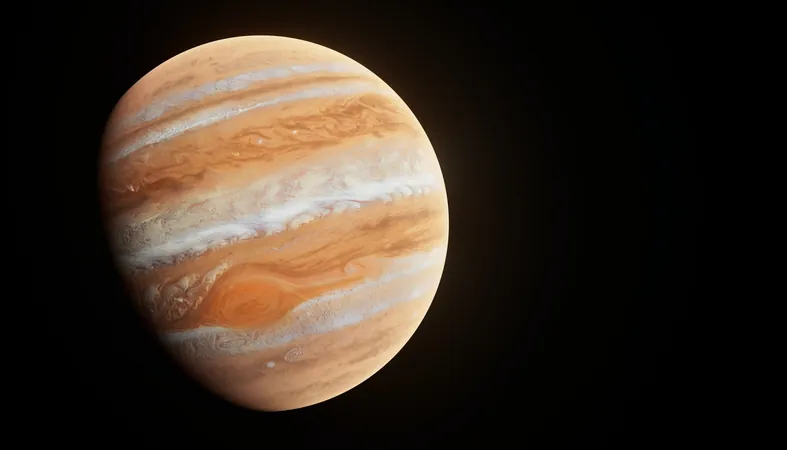
Jupiter's 'Alien Aurora': Groundbreaking Discovery of New Plasma Waves
2025-08-24
Author: Ming
Unveiling the Mysteries of Jupiter's Aurora
A team of researchers from the University of Minnesota Twin Cities has made an astonishing breakthrough by identifying a brand new type of plasma wave within Jupiter's mesmerizing auroras. This revelation not only deepens our understanding of these 'alien auroras' but also enriches our knowledge of how Earth's own magnetic shield protects us from harmful solar radiation.
Historic Data from NASA's Juno Spacecraft
Utilizing data from NASA's Juno spacecraft, which has completed a historic low-altitude flyby over Jupiter's north pole, scientists were able to analyze the northern polar region as never before. This milestone is documented in the prestigious journal, Physical Review Letters. Ali Sulaiman, an assistant professor at the University of Minnesota’s School of Physics and Astronomy, emphasized the uniqueness of this mission: "While the James Webb Space Telescope captured some stunning infrared images of the auroras, Juno is the first spacecraft to conduct a polar orbit around Jupiter."
The Plasma Phenomenon Explained
Surrounding magnetized planets like Jupiter is a sea of plasma—a superheated state of matter where atoms disintegrate into electrons and ions. These charged particles race toward the planet's atmosphere, igniting brilliant auroras. On Earth, we are accustomed to witnessing these phenomena as vibrant green and blue lights, but Jupiter’s auroras remain largely invisible to the naked eye, requiring UV and infrared imaging to be appreciated.
Low-Frequency Waves: A Unique Discovery
Intriguingly, the analysis uncovered that Jupiter's polar plasma is characterized by an extremely low density coupled with a powerful magnetic field, resulting in plasma waves that possess an unprecedentedly low frequency. Robert Lysak, a professor in the University of Minnesota's School of Physics and Astronomy, pointed out, "While plasma may resemble a fluid, it is also susceptible to its own magnetic fields and external influences."
Contrasting Auroral Mechanics with Earth
This illuminating study also highlights the stark differences between Jupiter's and Earth's auroras. Unlike Earth’s donut-shaped auroral patterns, Jupiter’s complex magnetic field allows particles to surge directly into its polar caps. As Juno continues its mission, researchers are eager to gather additional data to unravel the intricacies of this captivating phenomenon.
Collaborative Efforts and Future Prospects
The research team included notable contributions from Sadie Elliott and other experts from the University of Iowa and the Southwest Research Institute. Together, they are paving the way for future explorations into the intriguing behaviors of plasma waves across the cosmos, expanding our understanding of not only Jupiter but also of magnetized planets throughout our universe.


 Brasil (PT)
Brasil (PT)
 Canada (EN)
Canada (EN)
 Chile (ES)
Chile (ES)
 Česko (CS)
Česko (CS)
 대한민국 (KO)
대한민국 (KO)
 España (ES)
España (ES)
 France (FR)
France (FR)
 Hong Kong (EN)
Hong Kong (EN)
 Italia (IT)
Italia (IT)
 日本 (JA)
日本 (JA)
 Magyarország (HU)
Magyarország (HU)
 Norge (NO)
Norge (NO)
 Polska (PL)
Polska (PL)
 Schweiz (DE)
Schweiz (DE)
 Singapore (EN)
Singapore (EN)
 Sverige (SV)
Sverige (SV)
 Suomi (FI)
Suomi (FI)
 Türkiye (TR)
Türkiye (TR)
 الإمارات العربية المتحدة (AR)
الإمارات العربية المتحدة (AR)